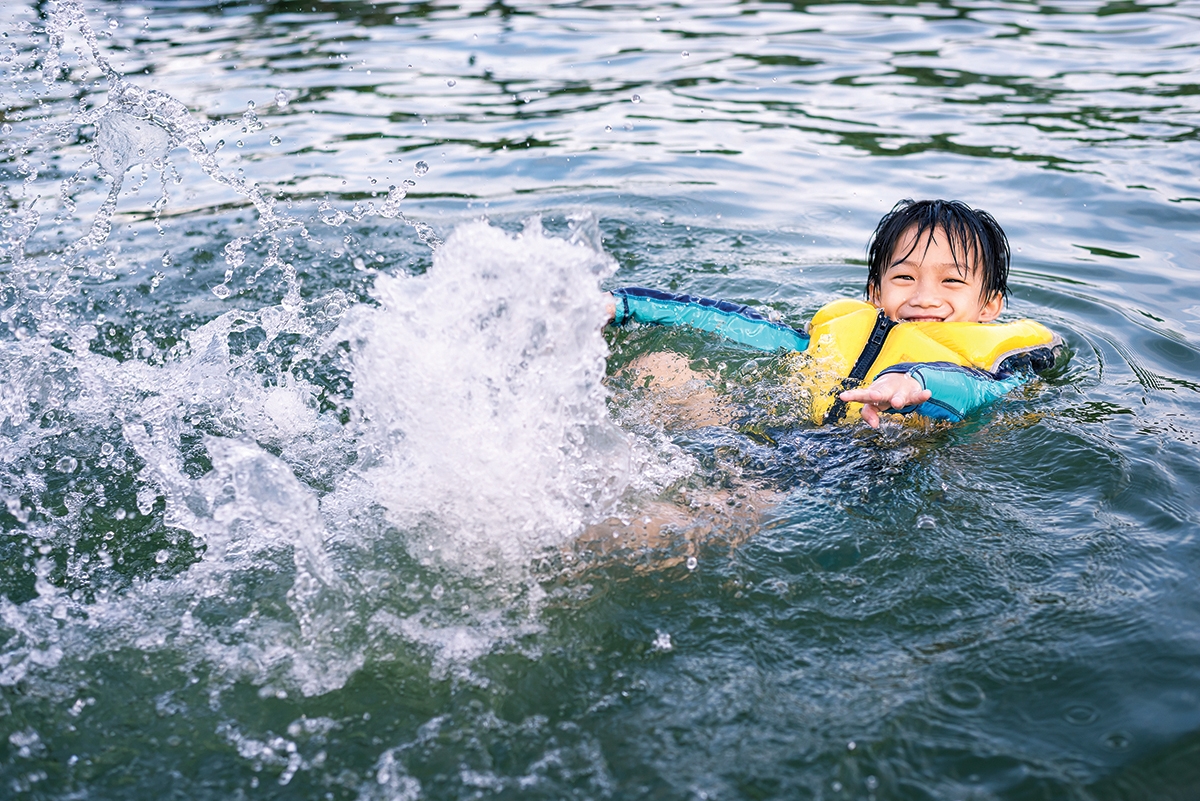Swim Safely
Understand “Dry Drowning” And Know The Signs

You may have heard terrifying stories of children dying long after being submerged in water. With summer here and many hours spent around water, here’s what you should know about “dry drowning” and a related phenomenon, “secondary drowning,” so your children can swim safely.
Dry drowning and secondary drowning refer to breathing problems that happen after the victim is out of the water. The World Health Organization (WHO) defines drowning as “the process of experiencing respiratory impairment from submersion/immersion in liquid.” This definition, which was adopted in 2002, applies to all drownings, including those called “dry” and “secondary” drownings. “Dry drowning” and “secondary drowning” are often used interchangeably, but these phrases actually refer to two different things. In dry drowning, breathing in water causes the vocal cords to spasm and close up, making it hard to breathe, but water never reaches the lungs. In secondary drowning, you also breathe water in and the vocal cords spasm, but some water does get into the lungs, irritating the lining of the lungs. This causes a condition called pulmonary edema, an accumulation of fluid in the lungs that can cause death because not enough oxygen passes from the lungs into the blood – this causes the heart to stop (cardiac arrest).
“Dry drowning” and “secondary drowning” are both very rare.
According to the Centers for Disease Control and Prevention (CDC), there were an average of 3,536 drownings in the U.S. each year from 2005 to 2014. The CDC does not break that down into how many were “dry drowning” or “secondary drowning.” However, experts estimate that combined, they represent no more than 1% or 2% of all drownings.
Neither “dry drowning” nor “secondary drowning” are accepted medical terms. Years ago, medical professionals used the phrases “dry drowning” and “secondary drowning” more commonly than they do now. You could even find these terms in medical dictionaries. But in 2002, the World Health Organization (WHO) concluded that these terms created a lot of confusion. They noted that research had raised questions about whether “dry” drowning actually happens at all, or whether its victims died of another cause. They also said that “secondary” drowning was a misleading term, because in most cases, the victim did not suffer a second submersion episode. In response, the WHO adopted its new, simpler definition of drowning. Ever since then, the WHO has said that the words “dry” and “secondary” should no longer be used to describe a drowning victim. Most medical professionals now follow the WHO’s guidance on this. However, these phrases continue to be used in news stories and by people who are not medical professionals, so it’s important to understand what they mean.
It takes very little water or time for drowning to occur. Drowning can happen just about anywhere there’s water. This includes places in your home that you might not expect, like your bathtub or your kitchen sink. Children can drown in as little as an inch of water. Because of that, there are many items in and around the home that could pose a drowning threat to children. These include buckets and pails, ice chests with melted ice, toilets, hot tubs, spas and whirlpools, irrigation ditches, post holes and wells, fish ponds, and fountains. In addition, in most cases, the process of drowning – from submersion to cardiac arrest – takes places within just a few minutes; it can even happen in less than a minute.
Drowning is preventable — there are measures you need to take.
When your child is in the water, or near the water, you or another adult should always watch closely, and stay within arm’s reach of the child.
Other recommended prevention measures include:
– If you have a backyard pool, fence it off and lock the gate so that children can’t get into it when you aren’t with them.
– Make sure your children always wear life jackets when they are in and around natural bodies of water.
– Parents should learn CPR and keep a telephone and emergency equipment, such as life preservers, nearby.
If a child stops breathing after being in the water, don’t delay – begin CPR right away. If someone else is present, ask them to call 911. Concentrate on giving CPR until his or her breathing has resumed or paramedics arrive. Afterward, the child should be given a complete medical examination, even if he or she seems all right. A child who has stopped breathing, inhaled water, or lost consciousness should remain under medical observation for at least 24 hours to be sure there is no damage to the respiratory or nervous system.

